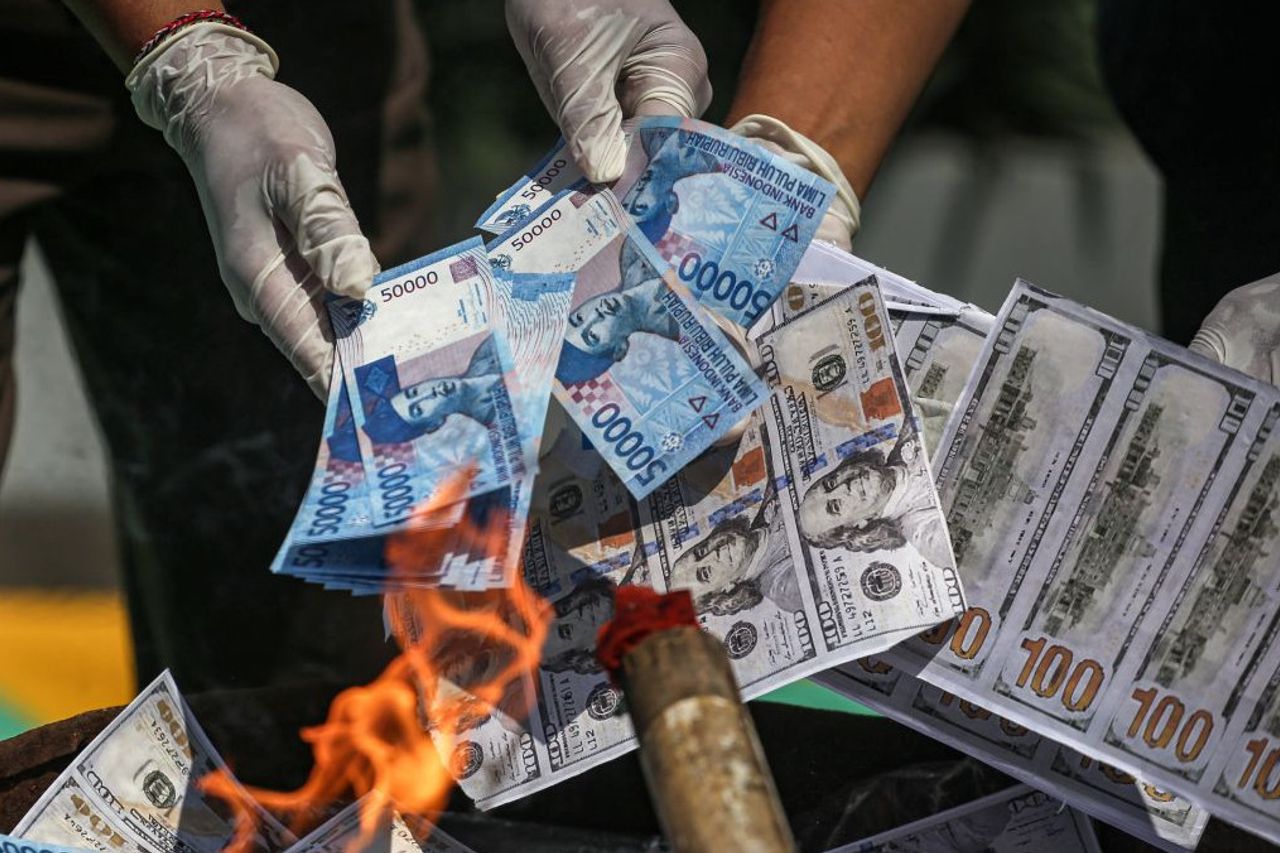BI Opens Voice About Finding Deposit Certificate In Makassar UIN Counterfeit Case

JAKARTA - Bank Indonesia (BI) has opened its voice regarding the police findings regarding Government Securities (SBN) certificates amounting to Rp700 trillion and BI deposits worth Rp45 trillion in the disclosure of counterfeit money cases at UIN Makassar, Gowa Regency, South Sulawesi.
Head of the Bank Indonesia Bank Indonesia Money Management Department, BI Marlison Hakim, confirmed that the findings of the Gowa Police were suspected of being fake certificates of fake State Securities and BI Deposits, that BI had never issued BI deposit certificate documents.
"Meanwhile, SBN ownership is cryptless (without warkat) meaning that there are no ownership certificate documents held by investors because the ownership of these investors is recorded electronically," he explained in his statement, Tuesday, December 31.
Marlison conveyed that in connection with the disclosure of the case of counterfeit money in Gowa, South Sulawesi, based on BI's research on samples of evidence, it was identified that the evidence was counterfeit money with very low quality and was very easy to identify with the naked eye through the 3D method (viewed, touching, ERADICATED).
According to Marlison, the counterfeit money was printed using printer and regular printing inkjet techniques, so there were no counterfeiters using the offset printing technique as the news circulated.
"This is in line with the evidence of a printing machine found by the National Police, which is an ordinary public printing machine, not classified as a money printing machine," he explained.
Marlison said that there was no element of money safety that was successfully falsified, a.l. safety threads, watermarks, electrotypes, and UV images were only printed normally using sablon, and the paper used was a regular paper. counterfeit money found to commute under a very low quality U-light emitting, both in terms of location, color, and shape with real Rupiah money.
Karena itu, Marlison menyampaikan masyarakat tidak perlu khawatir untuk tetap dapat bertransaksi secara tunai, namun tetap perlu berhati-hati dan mengenali ciri-ciri uang asli dengan cara 3D, yang dapat diakses pada website BI pada https://www.bi.go.id/id/rupiah/gambar-uang/Default.aspx.
He conveyed, regarding information on social media regarding how to test the authenticity of Rupiah's money, the public does not need to take other actions that can damage money, such as dividing money.
"As with goods that have thickness, paper rupiah money in any condition (whether it is still suitable for distribution or is worn out) can also be split using certain techniques or methods," he said.
Marlison said that splitting rupiah currency is also one of the actions that can be categorized as damaging money and is a violation with criminal sanctions.
As stipulated in Article 35 of Law no. 7 of 2011 concerning Currency stipulates that anyone who intentionally destroys, cuts, destroys and/or changes the Rupiah with the intention of degrading the honor of the Rupiah as a symbol of the state will be punished with a maximum imprisonment of 5 years and a maximum fine of Rp. 1 billion.
"BI will continue to strive to strengthen the quality of Rupiah's money so that the design of Rupiah's money is more easily recognized and makes it difficult for counterfeiting. In addition, BI continues to educate all levels of society nationally through the Love, Proud, Understanding Rupiah campaign," he explained.
Marlison invites the public to recognize the characteristics of the authenticity of Rupiah's money through the 3D method (viewed, touching, scanned) and always taking care of Rupiah's money to protect yourself from the crime of counterfeit money.
"People always apply 5 Don't: Don't fold, Don't Cross Out, Don't Distapler, Don't Cremate, And Don't Get Wet. Dissemination of information about the authenticity of Rupiah money continuously is carried out through socialization and public education, including through social media content, and the BI website," he explained.
In addition, Marlison said that the public can also use a tool in the form of ultraviolet lights (UV) to identify the characteristics of the authenticity of paper Rupiah money that varies in several colors.
SEE ALSO:
Marlison emphasized that BI also always reminds the public about the punishment for the crime of Rupiah Money.
As regulated in Article 36 of the Currency Law, every person who fakes Rupiah shall be sentenced to a maximum imprisonment of 10 years and a maximum fine of Rp. 10 billion.
In addition, everyone who distributes and/or spends Rupiah which he knows is a Fake Rupiah shall be punished with a maximum imprisonment of 15 years and a maximum fine of Rp. 50 billion.
"BI periodically coordinates with all elements of Botasupal (BIN, Polri, Prosecutor's Office, DJBC), banks, and other relevant agencies in preventing and eradicating counterfeit money," he concluded.
